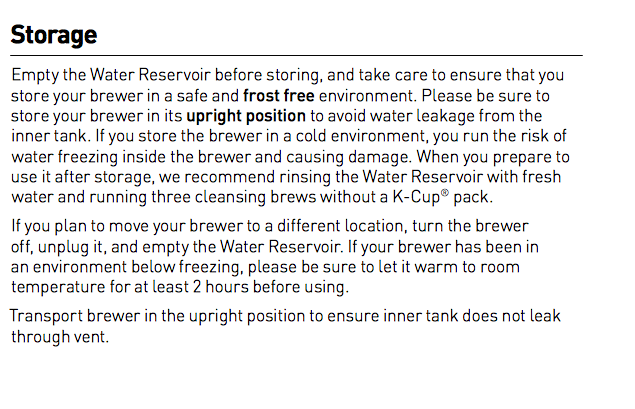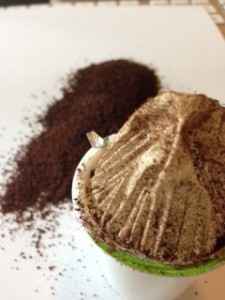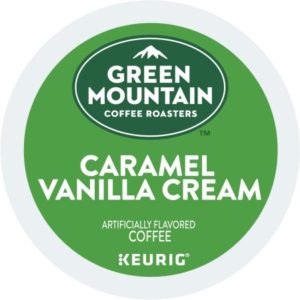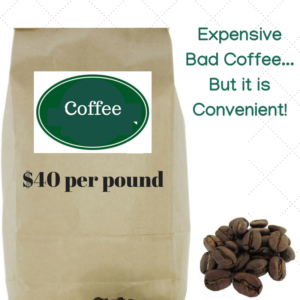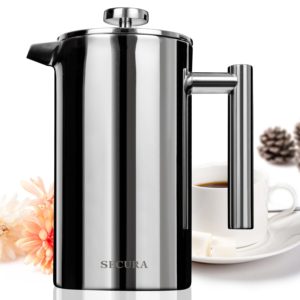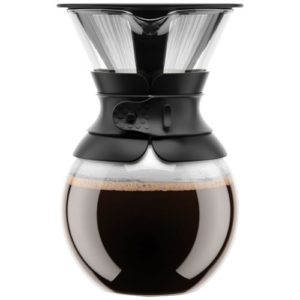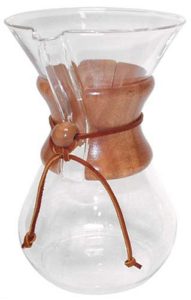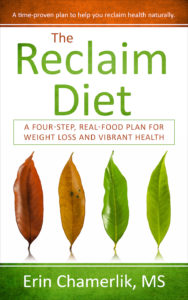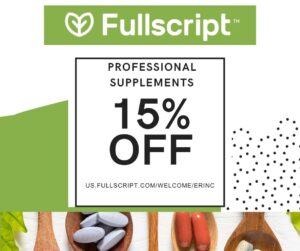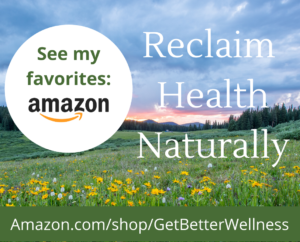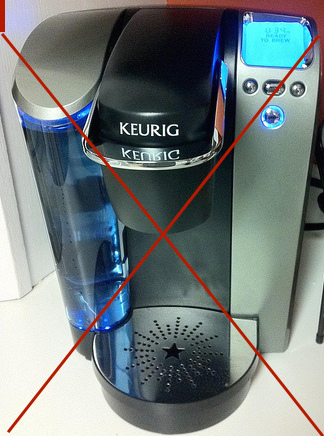
Why I Kicked My Keurig to the Curb

What busy person doesn’t love the idea of having a personal cup of coffee instantly with the push of a button. Many people are delighted when the Keurig machines show up in the workplace or doctor’s waiting room. I loved the idea. I bought one from Costco along with the handy unit to store those awkward K Cups. I, of course, insisted on the Newman’s Organic K Cups for my coffee choice.
We stocked our hot beverage center with a variety of flavored K Cups.
Then that little voice in my head started asking questions
I pushed those concerns away for the sake of convenience (after all, filling my own coffee filter with fresh ground coffee takes all of what… two minutes? I’m a busy person, just like you!).
I wondered:
- How fresh is the coffee in a K Cup?
- What toxins am I exposing myself to as the hot water forces the coffee through the little holes poked in the plastic cup?
- What’s growing in the “inner water tank” that can never be cleaned and inspected?
- What is that lid made of that is poked at the top to allow the water to enter the cup?
- What chemicals are used in the flavored coffee selections?
- Is there a filter inside the plastic cup? What is it made of and how is it secured inside the plastic cup?
If you own a Keurig, please continue reading this post because what I discovered is shocking and sickening. This will explain why I am kicking my Keurig to the curb.
Is your Keurig harboring mold and bacteria?
When I packed up my kitchen to move 500 miles south, I wanted to make sure that my Keurig was completely empty and dry before it went on the moving truck. IMPOSSIBLE!
Keurig.com states, “Once your Keurig home brewer has been primed, you cannot empty the water from the inside. The internal tank of the brewer cannot be drained.”
Update

Many people have posted videos of what they found when they opened up their Keurig.
Some found mold everywhere, even though it was regularly cleaned with vinegar (Youtube video, “Keurig Mold! Nasty!” and “Keurig Bacteria Mold Issues”) while other people did not find mold.
So, there you go.
It may or may not be a problem.
Well, do you feel lucky?
The rubber tubing and the internal tank of the Keurig cannot be drained.
It is possible that bacteria and mold are happily living inside that hidden water tank where it is nice and dark and warm. Another mold-magnet is that black rubber ring on the bottom of the exterior water container. Look now! Is there green or black slime? ewwwww …
Donna Duberg, M.A., M.S., an assistant professor of clinical laboratory science at Saint Louis University said, “Bacteria forms a slick biofilm when grown in moist, dark places, and so do molds.”
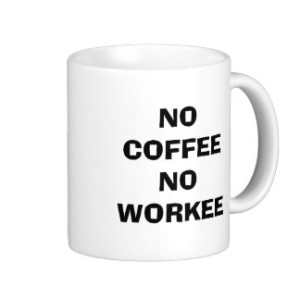
No, your coffee bean’s antibacterial action is not enough to kill these microbes that are floating through the system. Duberg said, “There is research which shows that it is only about 50 percent effective in killing bacteria, such as Staphylococcus aureus and Streptococcus mutans, and molds.”
User Manual for two models, Keurig Hot and Keurig K-Cup K70/K75:
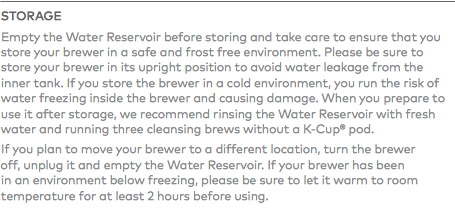
Won’t the Hot Water Kill the Bad Bacteria and Mold?
No, your water is not getting hot enough to kill all microbes that are living in your coffee system. For that to happen, the water would need to reach boiling temperature and stay there for one minute.
Can you clean the Keurig?
The first step is to empty out the exterior water tank and look inside the tank. Does it feel slimy? Clean and dry that tank and run a few cycles of diluted vinegar through the Keurig. Good luck with that. One person said, “I could still smell a moldy aroma after doing quite a few vinegar cycles. There were also black floaty things in my cup even when I just brewed hot water.”
Some Keurig owners claim to have used vinegar to clean their machines, but when the units were opened, mold was found.
Plastic K Cups Conundrum 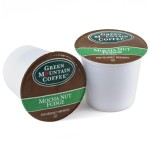
The Plastic – Estrogenic activity
The K Cup is a composite plastic, #7. Although this is technically BPA-free the chemicals from the composite plastic are not safe and they still have estrogenic activity.
The authors of a study published July 1, 2011 in Environmental Health Perspectives, PMID: 21367689, wrote:
“Almost all commercially available plastic products we sampled—independent of the type of resin, product, or retail source—leached chemicals having reliably detectable estrogenic activity (EA), including those advertised as BPA free. In some cases, BPA-free products released chemicals having more EA than did BPA-containing products.Most Plastic Products Release Estrogenic Chemicals.”
As long as I mentioned fake estrogens coming from the plastic in your K Cup, don’t make a bad situation worse by adding soy milk to your coffee! (Men, would you like “moobs” with your mocha and soy?).
The Cups Are Non-Recyclable
Keurig sold more than 9 billion of its single-serve plastic coffee pods, called K-Cups, in 2015.
This is a big problem for the environment since we have seen an explosion in the use of single cup coffee makers, like Keurig, in the last few years. MotherJones.com reported, over 8.3 billion K Cups a year are discarded, enough to circle the earth 10.5 times!
Adam Minter, Bloomberg View, sees it differently.
“According to the Hamburg Department of the Environment and Energy, the average coffee pod weighs three grams (Nespresso’s popular 1.2-gram pods and others weigh less). Using that figure, all those Green Mountain K-Cups would cumulatively weigh 25,500 metric tons.” He doesn’t think this is a problem in the grand scheme of our problem with plastic waste.
Update 2017: Keurig Green Mountain said it plans to change the plastic composition in the billions of K-cup single-serving coffee containers it sells by 2020. It will not be easy to recycle the new containers. Peeling apart components, separating the aluminum, recycling in the proper place . . . it seems like Keurig is trying, but the whole concept of delivering fresh coffee in a recyclable way just goes back to using a regular coffee maker or French Press.
The Lid is Polyethylene Coated Foil
Aluminum foil.
I try to avoid aluminum because of the connection with the biggies:
- Alzheimer’s Disease
- Anxiety
- Depression
- Autism
- Celiac Disease
MIT Scientist, Dr. Stephanie Seneff, PhD, has given a talk, “How aluminum and glyphosate (Roundup) collaborate to cause anxiety, depression, autism and celiac disease.”
A study published in the Journal of Alzheimer’s Disease (PMID:21157018) found that very small amounts of Aluminum are needed to produce neurotoxicity (dietary intake via food containers). Small amounts of aluminum accumulate over a lifetime and aluminum seems to accumulate most in brain tissues. Since 1911, experimental evidence has repeatedly demonstrated that chronic aluminum exposure reproduces neuropathological hallmarks ofAlzheimer’s Disease.
The Filter
The filter is made of filter paper and ?
I don’t know but somehow it is fused or glued inside the plastic cup.
The filter is the least of my concerns.
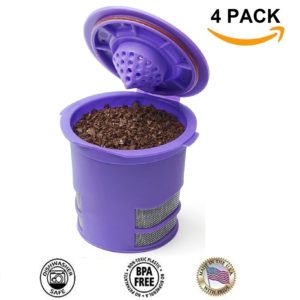 Reusable K Cups
Reusable K Cups
Although there are reusable K Cups on the market, reviews are mixed but you are still faced with the stagnant water situation and hidden water tanks and tubing that cannot be cleaned.
The reusable cups still needs to be filled every time you make a cup of coffee and the filter need to be cleaned every time. There goes your convenience, but if you are willing to risk the microbes, then this is better for the environment and more economical.
The Coffee
The flavored coffee K cups are typically flavored with “natural” or artificial flavors. There is no vanilla or caramel in Green Mountain Caramel Vanilla Cream – it is just coffee + artificial/natural flavor.
We know that food manufacturers use these names (artificial flavor and natural flavor) to hide ingredients that can act like MSG, a neurotoxin. I help people get to the root cause of chronic migraines and headaches. Often these MSG flavors are causing the problem.
One Keurig K cup user complained of nausea, fatigue, dizziness and vomiting. “This all started when my work got a Keurig machine and I started drinking their tea regularly.”
Another user reported, “I have noticed when I use the K Cups on a daily basis my lips tend to get dry and numb on the outside.”
One of my clients noticed a connection between skin rashes and the use of the Keurig K cups with flavoring.
This could be a reaction to “natural” and artificial flavors often found in flavored coffee.
Expensive Bad Coffee
James Hamblin wrote in his 2015 article published on TheAtlantic.com, “The cups contain a mere 11 grams of ground coffee, vacuum-sealed in nitrogen to prevent oxidation.
K-Cups are extremely profitable, selling standard coffee grounds for around $40 per pound.”
Do YOU Care?
- Do you care about the taste and quality of your coffee?
- Do you care about the environment and the workers in the coffee bean industry?
- Do you care about your health?
There is nothing like a steaming hot cup of freshly brewed coffee made with quality coffee beans. Using the Keurig was easy but the taste was marginal. I do not consider myself a coffee connoisseur but I love a good cup of coffee. Finally, I allowed myself to consider all the issues with the Keurig and I decided to kick my Keurig to the curb.
Now That’s a Good Cup of Coffee
The coffee beans you purchase should be Fair Trade, organic and shade grown.
- The coffee beans sh
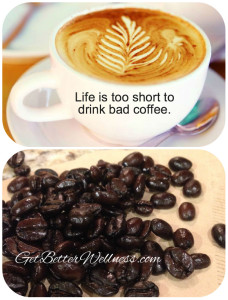 ould have been grown and processed without the use of pesticides, herbicide or chemicals. “Most people are not aware that regular coffee consumption can be a significant source of pesticides. According to the CS Monitor, conventional farmers apply up to 250 pounds of chemical fertilizers per acre!” – Mercola.com
ould have been grown and processed without the use of pesticides, herbicide or chemicals. “Most people are not aware that regular coffee consumption can be a significant source of pesticides. According to the CS Monitor, conventional farmers apply up to 250 pounds of chemical fertilizers per acre!” – Mercola.com
Are you sipping pesticides with your brew?
- We know that pesticides are contributing to the growing rate of cancer, Parkinson’s Disease and miscarriage.
- Shade grown coffee is better tasting coffee because shade-grown coffee beans ripen more slowly, resulting in a richer flavor. More importantly it is better for the environment and provides a healthier environment for the workers.
How to Make Coffee
When shopping look for Organic, fair trade, shade grown beans.
Get a grinder and grind at home. I like the automatic burr mill.
Use Spring Water or Filtered Water.
Brew the coffee using a device that you can thoroughly clean and dry.
There are many options like French Press and Pour Over, but really there are many options.
Even an automatic drip or percolator is going to be a better option than a Keurig.
Top of the line automatic coffee maker – tastes like French Press.
- Uses a copper boiling element for consistent brewing temperature (196°-205° F), via a powerful and energy efficient copper boiling element.
- Clean and drain the water tank as desired.
How to make French Press Coffee
Many people consider the French Press to be the ultimate coffee brewing method. Coarse ground coffee is allowed to steep for several minutes in boiling water in the French Press.
The result is a richer, fuller flavor with more aroma and a more delightful coffee experience. It is interesting to note that French Press coffee is higher in cafestol, a fraction of coffee that has been shown in studies to raise triglycerides and LDL cholesterol. If you are concerned about high triglycerides then this may not be the system for you. However, using a non-bleached coffee filter with a coffee maker will remove the cafestol. There are many studies to support this found on PubMed.gov.
Love the taste, hate the mess of French Press, try this.
Is Coffee Healthy?
For the general population the evidence from several large studies suggests that moderate coffee drinking is not detrimental to health and may have several health benefits. If coffee gives you the shakes, disturbs sleep, and increases stress, then cut back or eliminate coffee. It is never healthy to drink pesticides in coffee. It is never healthy to have an increased exposure to estrogenic compounds from plastic K Cups or styrofoam cups. It is never healthy to continue to make coffee with any machine that is difficult to clean and possibly harboring mold and bacteria.
Stop Drinking Froo Froo Coffee Drinks
The cafe on the corner may be serving up delicious coffee drinks, but take the time to look up the ingredients and calorie content of your favorite drink. Many contain artificial flavors (MSG), high fructose corn syrup, caramel color and preservatives. This type of coffee is not going to give you any health benefits.
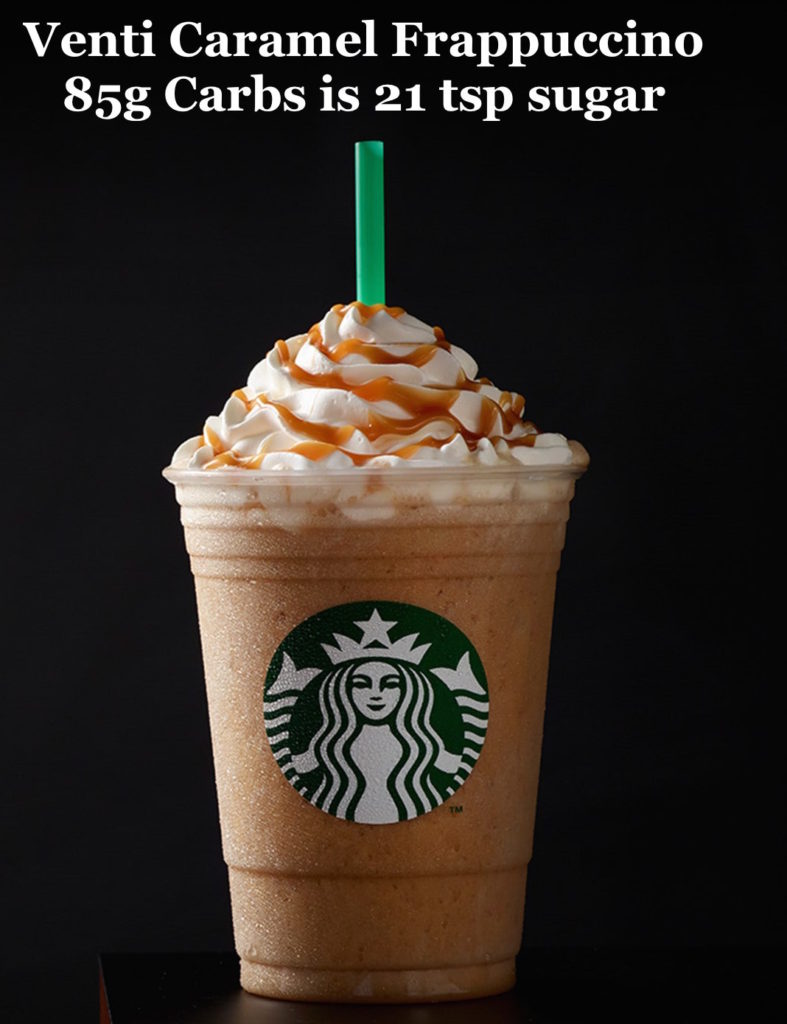
What is new with Keurig
On January 29, 2018, Keurig Green Mountain agreed to acquire Dr Pepper Snapple Group in an $18.7 billion deal.
This merger brings Keurig together with 7Up, Crush, Snapple, Hawaiian Punch, RC, and about 45 other brands of soda, juice, juice drinks, teas, mixers, waters and more.
Life is too short to drink bad coffee.
Get the good beans, grind them fresh, brew it yourself.
Be good to yourself. Be good to the earth.
I, Erin Chamerlik, am a Health & Nutrition Educator, not a physician. As such, I do not diagnose or treat disease; rather I help support the healing response of the body through food, nutritional supplements, and relaxation exercises. This information is educational only and is not intended to replace the advice of a healthcare professional. The statements made by Erin Chamerlik or Get Better Wellness, Inc. have not been evaluated by the FDA. Any products mentioned are not intended to diagnose, treat, cure, or prevent any disease and I may earn a small affiliate commission. Consult with your physician if you have any concerns about changing your diet or taking supplements.
Recommended
-
Dandelion for Liver Support and Health BenefitsJuly 20th, 2024
-
Modified Citrus PectinJuly 11th, 2024
-
Bentonite Clay Mask for Face and ArmpitsJuly 8th, 2024
-
Two Supplements for Erectile DysfunctionJune 30th, 2024


